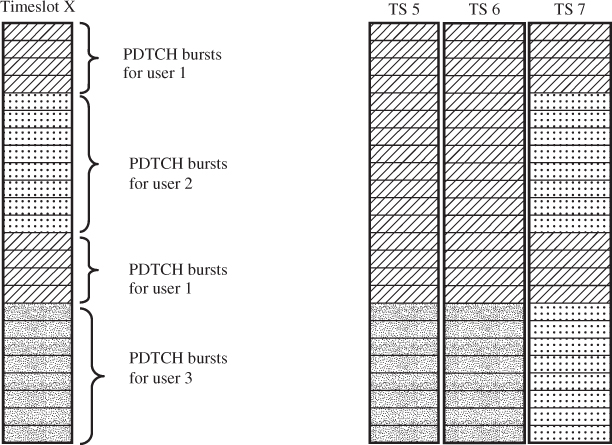2.3 The GPRS Air Interface
2.3.1 GPRS vs. GSM Timeslot Usage on the Air Interface
Circuit-Switched TCH vs. Packet-Switched PDTCH
As discussed in Chapter 1, GSM uses timeslots on the air interface to transfer data between subscribers and the network. During a circuit-switched call, a subscriber is assigned exactly one TCH that is mapped to a single timeslot. This timeslot remains allocated for the duration of the call and cannot be used for other subscribers even if there is no data transfer for some time.
In GPRS, the smallest unit that can be assigned is a block that consists of four bursts of a packet data traffic channel (PDTCH). A PDTCH is similar to a TCH in that it also uses one physical timeslot. If the subscriber has more data to transfer, the network can assign more blocks on the same PDTCH right away. The network can also assign the following block(s) to other subscribers or for logical GPRS signaling channels. Figure 2.5 shows how the blocks of a PDTCH are assigned to different subscribers.
Figure 2.5 Simplified visualization of PDTCH assignment and timeslot aggregation.

Instead of using a 26- or 51-multiframe structure as in GSM (see Section 1.7.3), GPRS uses a 52-multiframe structure for its timeslots. Frames 24 and 51 are not used for transferring data. Instead, they are used to allow the mobile device to perform signal strength measurements on neighboring cells. ...
Get From GSM to LTE: An Introduction to Mobile Networks and Mobile Broadband now with the O’Reilly learning platform.
O’Reilly members experience books, live events, courses curated by job role, and more from O’Reilly and nearly 200 top publishers.

